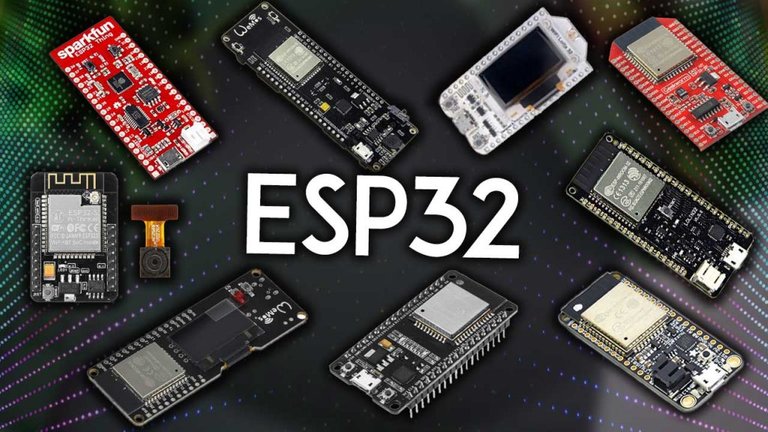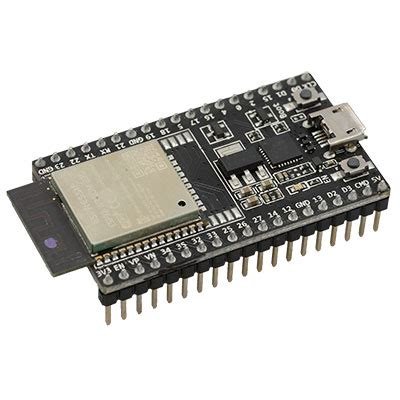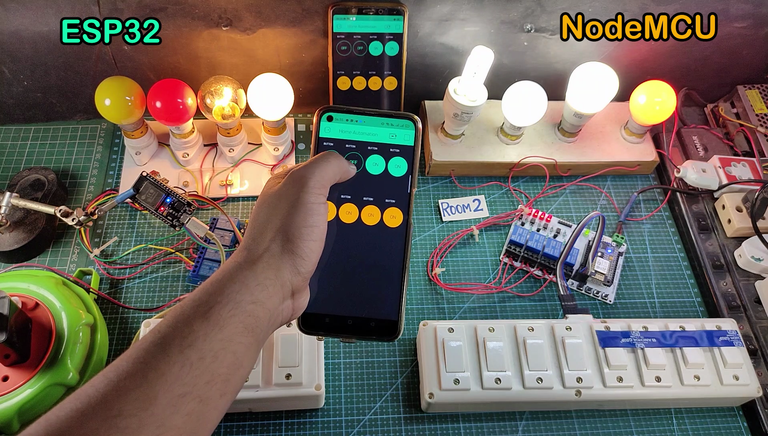How ESP32 microcontrollers works & Use cases
ESP32 is a powerful microcontroller designed by Espressif Systems, which is ideal for IoT applications that require Wi-Fi and Bluetooth capabilities. It combines a 32-bit Xtensa LX6 CPU, along with two cores, and an array of peripheral interfaces, which makes it a highly flexible and efficient solution for IoT applications.

The Architecture of ESP32:
ESP32 microcontrollers are built around a dual-core Xtensa LX6 CPU architecture, which allows for maximum performance and power efficiency. Each core has a clock speed of up to 240 MHz, which provides excellent processing power for complex tasks. Additionally, the CPU architecture is designed to minimize power consumption, making it ideal for battery-powered devices.
The microcontroller also features a rich set of peripheral interfaces, including SPI, I2C, UART, and ADC, which makes it easy to interface with sensors and other devices. It also includes a Wi-Fi module and a Bluetooth Low Energy (BLE) module, which supports both classic Bluetooth and BLE 5.0 specifications. These modules enable the microcontroller to connect to a wide range of devices and networks, making it perfect for IoT applications.
Features of ESP32:
ESP32 microcontrollers have numerous features that make them an excellent choice for IoT applications. Some of these key features include:
Dual-Core CPU - The dual-core CPU provides high performance and power efficiency, enabling the microcontroller to handle multiple applications and complex tasks simultaneously.
Wi-Fi and Bluetooth Connectivity - The Wi-Fi and Bluetooth modules on the ESP32 provide wireless connectivity, allowing the microcontroller to connect to a variety of devices and networks.
Low Power Consumption - The microcontroller is designed to minimize power consumption, making it suitable for battery-powered applications.
Peripheral Interfaces - ESP32 microcontrollers feature a rich set of peripheral interfaces such as SPI, I2C, UART, and ADC, making it easy to interface with sensors and other devices.
Security Features - The ESP32 includes a variety of security features such as secure boot, flash encryption, and hardware-accelerated AES encryption, making it a secure platform for IoT applications.

How ESP32 Works:
ESP32 microcontrollers work by executing instructions stored in their memory, which are fetched from the program memory and executed by the CPU. The dual-core CPU allows the microcontroller to run two sets of instructions simultaneously, which is particularly useful for IoT applications, where multiple tasks need to be executed at the same time.
The Wi-Fi and Bluetooth modules on the ESP32 provide wireless connectivity, allowing the microcontroller to connect to a wide range of devices and networks. The Wi-Fi module supports both 2.4 GHz and 5 GHz bands and includes various security features such as WPA/WPA2 personal and enterprise security, 802.1x authentication, and hardware-accelerated AES encryption.
The Bluetooth module on the ESP32 supports both classic Bluetooth and BLE 5.0 specifications, enabling the microcontroller to connect to a wide range of devices. BLE is particularly useful for IoT applications, as it is designed to minimize power consumption, which is crucial for battery-powered devices.
The ESP32 microcontroller features a variety of peripheral interfaces such as SPI, I2C, UART, and ADC, making it easy to interface with sensors and other devices. These interfaces can be used to read data from sensors, control actuators, and communicate with other devices.

Use Cases:
The ESP32 microcontroller is a highly versatile platform that can be used for a wide range of IoT applications. Here are some common use cases for the ESP32 microcontroller:
Home Automation:
The ESP32 microcontroller can be used to control smart home devices, such as lights, locks, thermostats, and security systems. By using the Wi-Fi and Bluetooth capabilities of the ESP32, users can remotely control their home devices from a smartphone or other device.
Environmental Monitoring:
The ESP32 microcontroller can be used to collect and analyze data from environmental sensors, such as temperature, humidity, and air quality sensors. This data can be used to optimize building energy consumption and improve indoor air quality.
Agriculture:
The ESP32 microcontroller can be used to monitor and control agricultural systems, such as irrigation systems, greenhouse environments, and livestock management. By using sensors and actuators connected to the ESP32, farmers can optimize their crop yields and animal health.
Industrial Automation:
The ESP32 microcontroller can be used in industrial automation applications, such as process control and machine monitoring. By using the rich set of peripheral interfaces available on the ESP32, industrial systems can be monitored and controlled in real-time, improving efficiency and reducing downtime.
Wearables:
The ESP32 microcontroller can be used in wearable devices, such as smart watches and fitness trackers. By using the low power consumption and Bluetooth capabilities of the ESP32, wearables can be designed with longer battery life and improved connectivity.
Robotics:
The ESP32 microcontroller can be used to control robots and drones, using sensors and actuators to enable autonomous navigation and obstacle avoidance. By using the high processing power and peripheral interfaces available on the ESP32, robots and drones can be designed with improved accuracy and performance.
Transportation:
The ESP32 microcontroller can be used in transportation applications, such as fleet management and vehicle monitoring. By using GPS sensors and wireless communication capabilities, the ESP32 can provide real-time tracking and monitoring of vehicles, improving safety and efficiency.
Energy Management:
The ESP32 microcontroller can be used to monitor and control energy systems, such as solar and wind power systems. By using sensors and actuators connected to the ESP32, energy production and consumption can be optimized, reducing costs and improving sustainability.
Overall, the ESP32 microcontroller is a versatile platform that can be used in a wide range of IoT applications. Its high processing power, Wi-Fi and Bluetooth capabilities, and rich set of peripheral interfaces make it an ideal solution for a variety of industries and use cases.
Conclusion:
ESP32 microcontrollers are an excellent choice for IoT applications, thanks to their powerful dual-core CPU, Wi-Fi and Bluetooth capabilities, and a rich set of peripheral interfaces. They are also designed to minimize power consumption, making them suitable for battery-powered applications. Overall, ESP32 microcontrollers are a flexible and efficient solution for a wide range of IoT applications.
https://twitter.com/1492571933690499076/status/1628412617877336067
The rewards earned on this comment will go directly to the people( @ptmaker ) sharing the post on Twitter as long as they are registered with @poshtoken. Sign up at https://hiveposh.com.
https://leofinance.io/threads/@ptmaker/re-leothreads-22kw5wgkp
The rewards earned on this comment will go directly to the people ( @ptmaker ) sharing the post on LeoThreads.
Congratulations @ptmaker! You have completed the following achievement on the Hive blockchain And have been rewarded with New badge(s)
Your next target is to reach 3500 upvotes.
You can view your badges on your board and compare yourself to others in the Ranking
If you no longer want to receive notifications, reply to this comment with the word
STOPCheck out our last posts:
Support the HiveBuzz project. Vote for our proposal!
Bookmarked for useful reference later.
!discovery 37
Really nice post buddy! Congratulations!